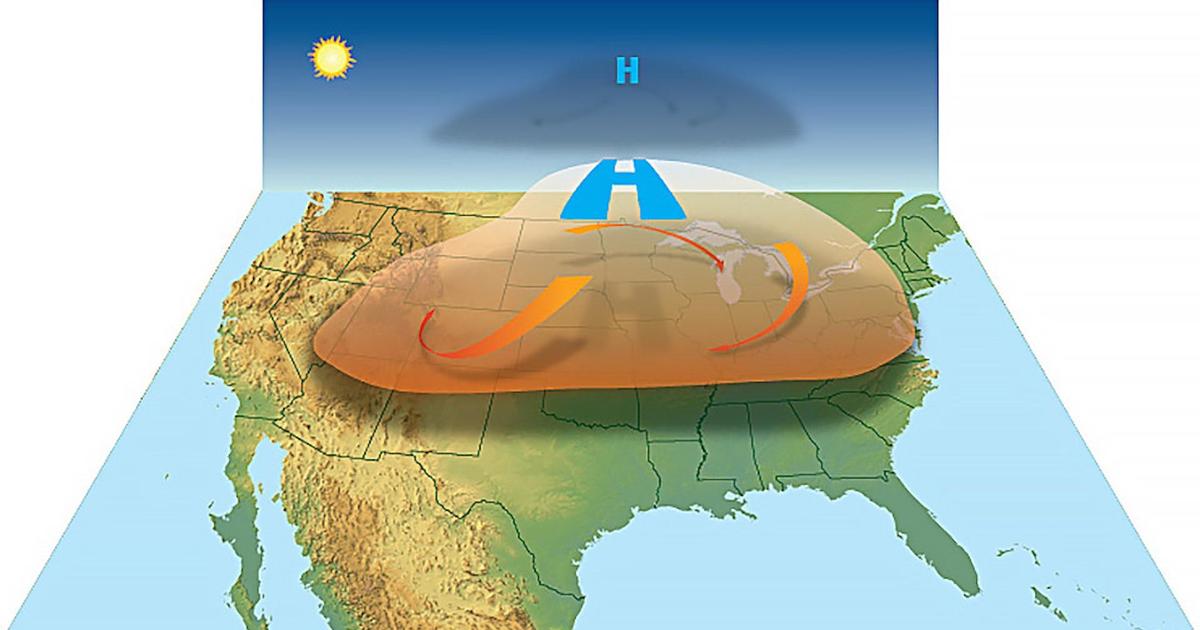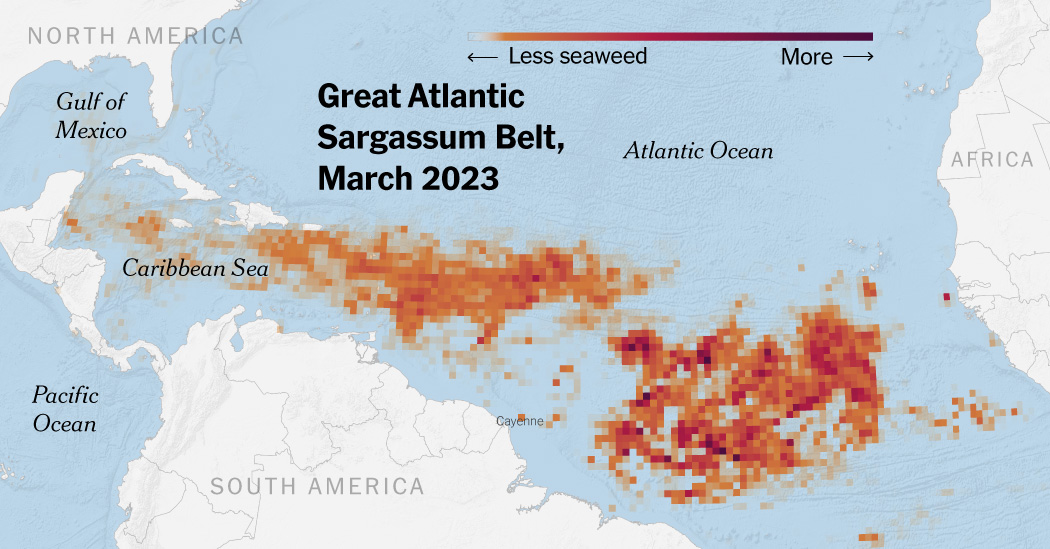The Grand Canyon and Colorado River Are in Crisis
As the planet warms, low snow is starving the river at its headwaters in the Rockies, and higher temperatures are pilfering more of it through evaporation. The seven states that draw on the river are using just about every drop it can provide, and while a wet winter and a recent deal between states have staved off its collapse for now, its long-term health remains in deep doubt.
Our species’ mass migration to the West was premised on the belief that money, engineering and frontier pluck could sustain civilization in a pitilessly dry place. More and more, that belief looks as wispy as a dream.

North Canyon, an ancient tributary.
The Colorado flows so far beneath the Grand Canyon’s rim that many of the four million people who visit the national park each year see it only as a faint thread, glinting in the distance. But the river’s fate matters profoundly for the 280-mile-long canyon and the way future generations will experience it. Our subjugation of the Colorado has already set in motion sweeping shifts to the canyon’s ecosystems and landscapes — shifts that a group of scientists and graduate students from the University of California, Davis, recently set out to see by raft: a slow trip through deep time, at a moment when Earth’s clock seems to be speeding up.
John Weisheit, who helps lead the conservation group Living Rivers, has been rafting on the Colorado for over four decades. Seeing how much the canyon has changed, just in his lifetime, makes him “hugely depressed,” he said. “You know how you feel like when you go to the cemetery? That’s how I feel.”
Still, every year or so, he comes. “Because you need to see an old friend.”
![]()
The lands of western North America know well of nature’s cycles of birth and growth and destruction. Eras and epochs ago, this place was a tropical sea, with tentacled, snaillike creatures stalking prey beneath its waves. Then it was a vast sandy desert. Then a sea once again.
At some point, energy from deep inside the Earth started thrusting a huge section of crust skyward and into the path of ancient rivers that crisscrossed the terrain. For tens of millions of years, the crust pushed up and the rivers rolled down, grinding away at the landscape, up, down, up, down. A chasm was cleaved open, which the meandering water joined over time with other canyons, making one. Weather, gravity and plate tectonics warped and sculpted the exposed layers of surrounding stone into fluid, fantastical forms.
The Grand Canyon is a planetary spectacle like none other — one that also happens to host a river that 40 million people rely on for water and power. And the event that crystallized this odd, uneasy duality — that changed nearly everything for the canyon — feels almost small compared with all the geologic upheavals that took place before it: the pouring, 15 miles upstream, of a wall of concrete.
Since 1963, the Glen Canyon Dam has been backing up the Colorado for nearly 200 miles, in the form of America’s second-largest reservoir, Lake Powell. Engineers constantly evaluate water and electricity needs to decide how much of the river to let through the dam’s works and out the other end, first into the Grand Canyon, then into Lake Mead and, eventually, into fields and homes in Arizona, California, Nevada and Mexico.
The dam processes the Colorado’s mercurial flows — a trickle one year and a roaring, spiteful surge the next — into something less extreme on both ends. But for the canyon, regulating the river has come with big environmental costs. And, as the water keeps dwindling, plundered by drought and overuse, these costs could rise.
As recently as a few months ago, the water in Lake Powell was so low that there almost wasn’t enough to turn the dam’s turbines. If it fell past that level in the coming years — and there is every indication that it could — power generation would cease, and the only way water would be released from the dam is through four pipes that sit closer to the bottom of the lake. As the reservoir declined further, the amount of pressure pushing water through these pipes would diminish, meaning smaller and smaller amounts could be discharged out the other end.


North Canyon, and a spring at Vasey’s Paradise.
If the water dropped much more beyond that, the pipes would begin sucking air, and in time Powell would be at “dead pool”: Not a drop would pass through the dam until and unless the water reached the pipes again.
With these doubts about the Colorado’s future in mind, the U.C. Davis scientists rigged up electric-blue inflatable rafts on a cool spring morning. Slate-gray sky, low clouds. Cowboy coffee on a propane burner. At Mile 0 of the Grand Canyon, the river is running at around 7,000 cubic feet per second, rising toward 9,000 — not the lowest flows on record, but far from the highest.
Cubic feet per second can be a little abstract. As the group paddles toward the canyon’s first rapids, Daniel Ostrowski, a master’s student in agronomy at Davis, says it helps to think of basketballs. Lots of them. A regulation basketball fits loosely inside a foot-wide cube. Draw a line across the canyon, and imagine 9,000 basketballs tumbling past it every second.
At Mile 10, the scientists float by a more tangible visual aid. Ages ago, a giant slab of sandstone plunged into the riverbed from the cliffs above, and now it looms over the water like a hulking Cubist elephant. Or at 9,000 basketballs per second it looms. At higher flows — 12,600 basketballs, say — it’s submerged to its knees. At three times that, the water comes up to its head. And at 84,000, which is how much ran through in July 1983, the elephant is all but invisible, a ripple at the river’s surface.
![]()
The big problem with low water in the canyon, the one that compounds all others, is that things stop moving. The Colorado is a sort of circulatory system. Its flows carved the canyon but also sustain it, making it amenable to plants, wildlife and boaters. To understand what’s happened since the dam started regulating the river, first consider the smallest things that its water moves, or fails to move.
The Colorado picks up immense amounts of sand and silt charging down the Rockies, but the dam stops basically all of it from continuing into the Grand Canyon. Downstream tributaries, including the Paria and Little Colorado, add some sediment to the river, but not nearly as much as gets trapped in Lake Powell. Plus, when river flows are weak, more sediment settles on the riverbed.
The result is that the canyon’s sandy beaches, where animals live and boaters camp at night, are shrinking. Beaches that were once as wide as freeways are today more like two-lane roads. Others are even scrawnier. The sandy space that remains is also becoming overgrown with vegetation: cattail and brittlebush, arrowweed and seepwillow, bushy tamarisk and spiny camelthorn. Before the dam came in, the river’s springtime floods regularly washed this greenery away.


Loss of silt-laden water is harming the ecosystem.
A lusher, less-barren canyon might not sound like a bad thing. But grasses and shrubs block the wind from blowing sand onto the slopes and terraces, where hundreds of cultural sites preserve the history of the peoples who lived in and around the canyon. Sand shields these sites, which include stone structures, slab-lined granaries and craterlike roasting pits, from weather and the elements. With less sand drifting up from the riverside, the sites are more exposed to erosion and trampling by visitors.
Also, not every place in the canyon is becoming greener. Drought can sap the water that courses within the porous stone walls, water that, where it spurts out, sometimes feeds eye-popping bursts of plant life. Lately, some of these springs, like Vasey’s Paradise at Mile 32, have dried to a dribble for long stretches. But a few bends downriver, the U.C. Davis scientists spot several hanging gardens that, for now, are still thriving.
Besides sand, the Colorado is failing to move larger objects in the canyon. Cobbles and boulders periodically tumble in from hundreds of tributaries and side canyons, often during flash floods, creating bends and rapids in the river. With fewer strong flows to whisk this debris away, more of it is piling up at those bends and rapids. This has made many rapids steeper and narrowed boaters’ paths for navigating them.
Today, when the water is low, more boulders in the river are exposed at certain rapids, making them trickier to negotiate for the 30-to-40-foot-long motor rigs that are popular for canyon tours. In a future of prolonged low flows, tour companies might find it harder to run such large boats safely, cutting off one main way to experience the canyon intimately.
![]()
Drought and low water aside, there’s another aspect of the canyon’s future that worries Victor R. Baker, a geologist at the University of Arizona. Dr. Baker has spent four decades exploring alcoves, high ledges and tributary mouths in the Colorado Basin. He scours them for the very particular patterns of sand and silt left by giant floods. The stories they tell are startling.
Mad cascades of water, ones at least as large as any the Grand Canyon experienced in the 20th century, swept through it at least 15 times in the past four and a half millenniums, Dr. Baker and his colleagues have found. Geological evidence upriver from the dam points to 44 large floods of varying sizes there, most of them in the last 500 years.
As the atmosphere warms, allowing it to hold more moisture, the risk of another such deluge could be rising. If one struck when Lake Powell were already flush with melted snow, it could take out the dam, not to mention do considerable work on the canyon.
“I would think the future is going to be one moving toward, as they said in war, long periods of boredom interrupted by short episodes of total, absolute terror,” Dr. Baker said.
None of the government agencies with a hand in managing the canyon can do much about that, not on their own. But they are trying to beat back some of the other forces remaking the canyon from within.
Since 1996, the Bureau of Reclamation, which owns Glen Canyon Dam, has occasionally released blasts of reservoir water to kick up sand from the riverbed and rebuild the canyon’s beaches. The effects are noticeable. But the bureau conducts these “high-flow experiments” only when there’s enough water in Powell to spare. In April, it held its first one in five years.


Redwall Cavern, and the Nankoweap granaries, built 1,000 years ago.
The National Park Service works to preserve the Grand Canyon’s archaeological sites against erosion, even if that means leaving them swaddled in sand, where nobody sees them. “Those cultural resources that are covered by the sand are well suited by being covered by the sand,” said Ed Keable, the park’s superintendent.
Other issues, though, are so entrenched that addressing them just creates other problems. Take the spread of tamarisk, an invasive treelike shrub that has displaced native vegetation in the canyon and around other Western rivers. About two decades ago, officials decided to fight back by releasing beetles that loved eating tamarisk leaves. But the beetles loved those leaves so much, and their numbers grew so quickly, that they began threatening the Southwestern willow flycatcher, an endangered bird that nests in tamarisk.
There is a similar no-win feeling to the bigger question of how to keep the Colorado useful to everyone as it shrivels. The dam is the root cause of the canyon’s environmental shifts, which also include big changes to fish populations. But simply allowing the river to flow more naturally through the existing dam, so water is stored primarily in Lake Mead instead of in both Mead and Powell, wouldn’t reverse the shifts entirely.
Jack Schmidt, the director of the Center for Colorado River Studies at Utah State University, has concluded that the only way to allow sufficiently large amounts of sediment-rich water back into the canyon, short of dynamiting the dam, would be to drill new diversion tunnels into the sandstone around it. That would be costly, and require careful planning to dampen the immediate ecological effects.
“Like everything else in that damn river system,” Dr. Schmidt said, “there’s a consequence to everything.”
![]()
It’s the U.C. Davis scientists’ sixth night on the Colorado, and it comes after several numbing hours of paddling against the wind. As the sun touches the canyon walls with the day’s last glimmers of orange and gold, the graduate students sit in camp chairs chewing over what they’ve seen.
They are preparing for careers as academics and experts and policymakers, people who will shape how we live with the environmental fallout of past choices. Choices like damming rivers. Like building cities in floodplains. Like running economies on fossil fuels. Once, those were first-rate answers to society’s needs. Now they require answers of their own — a whole wearying cascade of problems prompting solutions that create more problems.
“It becomes overwhelming,” says Alma Wilcox, a master’s student in environmental policy, sitting by a scraggly, haunted-looking grove of tamarisk. It helps, she says, to focus: “Having control over a really small aspect of it is empowering.”


The basement rocks: dark schist and pink granite.
Yara Pasner, a doctoral student in hydrology, says she feels a duty to make sure the load on future generations is lessened, even if, or perhaps because, our forebears didn’t do us that courtesy. “There’s been a mentality that we will mess this up and the future generation will have more tools to fix this.” Instead, she says, we’ve found that the consequences of many past decisions are harder to cope with than expected.
The next morning, the group floats into the realm of the canyon’s oldest rocks. Almost two billion years ago, islands in the primordial sea crashed into the landmass that would become North America. The unimaginable heat and pressure from the collision cooked the rocks and sediment on the seafloor into layers of inky, shiny rock. This rock then lay buried beneath mountains that were formed in the collision, becoming squished and folded to create the otherworldly masses flanking the river today, which resemble nothing so much as freshly churned ice cream: dark gray schist swirled with salmon-pink granite.
But the mountains that sat above them? Those are all but gone, ground down over eons, their remnants long since scattered and recombined into new mountains, new formations.
“There were the Himalayas on top of this,” says Nicholas Pinter, the Davis geologist who has helped lead this expedition, gesturing from the end of a raft at Mile 78. “And it’s eroded,” he says. “Worn to an almost infinitesimally flat plane, before it all begins again.”
Somewhere in among those grand happenings — within the tiniest, most insignificant-seeming snatches of geologic time — is the world we live in, the one we have.

Map by Elena Shao.
Produced by Sarah Graham, Matt McCann, Claire O’Neill, Jesse Pesta and Eden Weingart. Audio produced by Kate Winslett.
Additional expert sources: Ryan S. Crow, John Dillon, Ben Dove, Elizabeth Grant, Reed Kenny, Brandon Lake, Tom Martin, Abel O. Nelson, Joel B. Sankey, John Toner, Robert H. Webb, Brian Williamshen and Greg Yarris.






